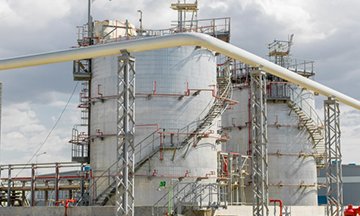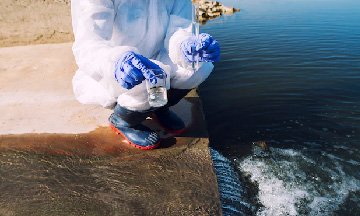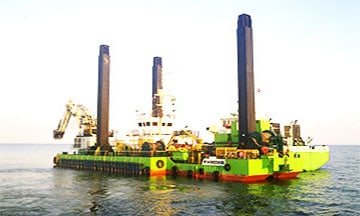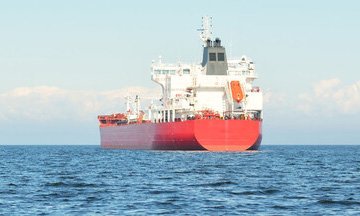Plant Shutdown Turnaround and Outages (STO) Management and Best Practices
| Date | Venue | Duration | Fees | |
|---|---|---|---|---|
| 22 Apr - 26 Apr, 2024 | Berlin | 5 Days | $5695 | Register |
| 22 Apr - 26 Apr, 2024 | Dubai | 5 Days | $4750 | Register |
| 20 May - 24 May, 2024 | Dubai | 5 Days | $4750 | Register |
| 17 Jun - 21 Jun, 2024 | Dubai | 5 Days | $4750 | Register |
| 24 Jun - 05 Jul, 2024 | Kampala | 10 Days | $9150 | Register |
| 08 Jul - 12 Jul, 2024 | Dubai | 5 Days | $4750 | Register |
| 12 Aug - 16 Aug, 2024 | Dubai | 5 Days | $4750 | Register |
| 19 Aug - 23 Aug, 2024 | Abu Dhabi | 5 Days | $4950 | Register |
| 08 Sep - 26 Sep, 2024 | Doha | 15 Days | $13500 | Register |
| 23 Sep - 27 Sep, 2024 | Dubai | 5 Days | $4750 | Register |
| 14 Oct - 18 Oct, 2024 | Dubai | 5 Days | $4750 | Register |
| 27 Oct - 31 Oct, 2024 | Riyadh | 5 Days | $4950 | Register |
| 11 Nov - 15 Nov, 2024 | Dubai | 5 Days | $4750 | Register |
| 16 Dec - 27 Dec, 2024 | London | 10 Days | $9850 | Register |
| 23 Dec - 27 Dec, 2024 | Dubai | 5 Days | $4750 | Register |
Course Outline
What is Shutdown Turnaround Outage? Oil, gas and chemical process industries have complex, compact, high-pressure and high-temperature process systems which handle highly flammable, explosive, toxic fluids and substances. Not only their design at project stage should be highly reliable but also their inspection and maintenance should be carried out as per designers’ recommendations during steady-state operations.
While only certain inspections (condition monitoring) and minor maintenance can be done online while plant is running; several of these require the Plant to shut down so that extensive planned inspection and maintenance activities can be carried out to render the plant fit for operation until the next planned shutdown. Normally, these shutdowns are planned as per risk-based strategies for business and safety.
Once the plant is shut down, the maintenance activities which cover internal inspection, repair, and replacements of faulty components are together termed as Turnaround. Since the Plant is not producing during the shutdown, this phenomenon is called Outage. The most important things are that the Turnaround activities must be carried out safely to minimize injury to workers and avoid any incident causing harm to the asset and the environment.
This Zoe training course will empower the course participants with comprehensive knowledge about Plant Shutdown, Turnaround and Outages (STO) Management and the associated Best Practices.
Course Objectives
This comprehensive ‘STO Management and Best Practices’ course, will equip the participants to:
- Understand the concepts around Plant Shutdown, Turnaround and Outages (STO) Management and Best Practices
- Comprehend the difference between partial and full shutdown and the associated safety risks
- Learn the philosophies behind Risk-based inspection and maintenance
- Comprehend the importance of stage-wise planning and the daily execution meetings for successful STOs
- Learn the operational procedures for safe shutdown, turnaround, and the start-up
- Orient on safety preparation for contractors’ workforce engaged in the turnaround, and the associated relationship between client and the contractors
- Understand safety procedures to prepare the plant equipment and piping for inspection and maintenance
- Train on turnaround inspection and maintenance activities in special situations like confined spaces, work at height, underground, underwater etc
- Learn on precautions on high-risk activities like grinding, gas-cutting, welding and radiography near live equipment
- Managing emergencies during the turnaround
- Comprehend the pre-requisites for safe start-up post turnaround
- Learn and practise the post-STO debriefing and comprehend the importance of Lessons Learnt sessions to improve the overall performance during the forthcoming STOs
Training Methodology
This collaborative ‘STO Management and Best Practices’ training program will comprise the following training methods:
- Lectures (Tutor-assisted online and classroom as per requirements)
- Seminars & Presentations
- Group Discussions and workshops
- Assignments
- Case Studies & Functional Exercises
Zoe Talent Solutions follows the ‘Do-Review-Learn-Apply’ model.
Organisational Benefits
Companies who nominate their employees to participate in this ‘STO Management and Best Practices’ course can benefit in the following ways:
- Ensure a trouble-free operation of Plants between the planned Shutdowns, Turnarounds and Outages
- Execute injury and incident-free and safe STOs
- All companies prefer to have safe STOs so that their production is not adversely affected, to the delight of customers and lenders
- Improved financial performance due to a well-maintained plant
Personal Benefits
Individuals who participate in this ‘STO Management and Best Practices’ course can gain from it in the following ways:
- Confident to identify and implement in their professional careers the underlying success factors for safe, efficient and productive STO activities
- Emerge as a skilled STO manager and contributor
- This training and experience prepare STO managers, supervisors and workers to discharge their functions efficiently and safely
- The knowledge and skill provided in this course are useful for all personnel to grow in their respective specialized trade and careers, compared to those who are not trained
Who Should Attend?
This ‘STO Management and Best Practices’ course would be suitable for:
- Construction Trainees/intern/fresh employees who want to take up STO management profession as their career
- All STO workers, supervisors and managers who want to promote productivity, health & safety in their projects
- All employees/workers who have been on rotation from their existing departments to the STO management department
Course Outline
MODULE 1: CONCEPTS ON PLANT SHUTDOWN, TURNAROUND AND OUTAGES (STO) MANAGEMENT
- Definitions/examples/scope of Shutdown, Turnaround and Outages
- Partial and full shutdown and the associated safety risks
- Stage-wise planning and the daily execution meetings for successful STOs
- Philosophies behind Risk-based inspection and maintenance
- Resources management for STO (manpower, materials and money)
MODULE 2: SAFE SHUTDOWN OF THE PLANT
- Depressurization using Standard Operating Procedures
- Venting, Draining and Flushing
- Isolations of valves and Blinding of flanges
- Drying and Passivation
- Opening the manholes and cleaning of equipment for safety preparation
- Provision of access for internal inspection and maintenance
- Testing of atmosphere inside equipment/ vessels for safe human entry
MODULE 3: SAFETY PREPARATION FOR CONTRACTOR WORKFORCE FOR THE TURNAROUND
- Training and orientation of contractors in client’s safety, health, and environment management system
- Safety and integrity inspection of contractors’ tools and equipment, including their health screening
- Contractors’ familiarization with the worksite
- Turnaround job briefings for workforce using work packages
- Training on emergency actions
- Preparation of Hazard Identification and Risk Assessment for the identified turnaround jobs
- Roles of contractors’ safety officers
- Roles of client safety officers
MODULE 4: INSPECTION AND MAINTENANCE IN CONFINED SPACES
- What is confined space: vessels, columns, pipes, deep excavations etc?
- Valid Permit to Work (PTW) for a confined space displayed at manhole
- Periodic testing of atmosphere inside the confined space, at least start of every shift
- Posting of confined space sentry outside the confined space at the manhole/entry points
- Display of identity badges of personnel inside the confined space at a display board outside the entry point
- Closure of all live permits before boxing up/closing the confined space
MODULE 5: INSPECTION AND MAINTENANCE ON AND IN EQUIPMENT CONNECTED TO ENERGY
- Hazards of energy: electricity, pneumatic and mechanical energy
- De-energization of equipment from energy
- Isolate the points which are starting points of energization to prevent accidental energization
- Tag and securely lock the isolation points with cautionary notices: “don’t energize/people working”
- The keys management around LOTO (lockout and Tagout) practice
- Then, issue the Permit to Work (PTW)
- Re-energization when all live PTWs are closed
MODULE 6: INSPECTION AND MAINTENANCE AT HEIGHT
- Issue the PTW only after ensuring that workers have fall arrest harnesses and lanyards
- Ensure tools and tackles are secured to prevent them from falling on other personnel
- Use of fit of purpose safety-certified scaffoldings where Risk Assessment warrants it
- Use of crane-supported man-baskets and cherry-picker trucks for enabling workers to work at height for short time
- Notify emergency response and rescue personnel on locations where work at height is on
MODULE 7: CATALYST UNLOADING AND LOADING
- Prescribe special purpose personnel protective equipment (PPE) e.g., Self-Contained Breathing Apparatus (SCBA) for the classified trained people doing the job
- Passivate the vessel on opening with Nitrogen so that the catalyst inside does not explode
- Unload the catalyst using the hoppers under controlled conditions and store the spent (used) catalyst in secured drums to dispose them off as per approved waste management protocols
- Inspect and repair the bed and mesh going to hold the new charge of fresh catalyst
- Load the new catalyst using the hoppers under controlled conditions
- Safely box up the vessel
MODULE 8: HIGH-RISK JOBS (GRINDING, GAS-CUTTING & WELDING NEAR LIVE EQUIPMENT)
- Gas testing around the sparking/open-flame workplace to rule out presence of leaking flammable gas from live nearby equipment to avoid fire and explosion
- Clear the nearby area of loose combustible materials
- Presence of portable continuous gas monitoring equipment near such work
- Presence of charged fire water hose near such work
- Presence of fire watch near such work
MODULE 9: UNDERGROUND AND UNDERWATER INSPECTION AND MAINTENANCE
- Location of underground services with help of drawings and locating tools to avoid accidentally damaging them while excavating the ground for laying foundation for new equipment/piping support etc during STOs
- Guarding the excavated areas so that vehicles and personnel don’t fall inside
- Check on safe atmospheric conditions inside excavation to avoid suffocation/toxic asphyxiation of workers
- Underwater inspection and maintenance must be carried out by the trained and qualified workers supported by licensed divers
MODULE 10: OTHER MISCELLANEOUS BEST PRACTICES FOR STO
- Radiography of welded joints for integrity check has lethal ionization radiation which must be controlled so that workers don’t get undue exposure
- Vehicle movement during STO must be managed with an approved traffic plan
- An efficient access management is a pre-condition to emergency evacuation headcount
- Incident reporting and investigation. Immediate corrective actions
- Safety audits and management surveys during the STOs
- Safety signs, cautionary notices and security management
- STO village, basic amenities such as washrooms, drinking water stations, accommodation hygiene, provision of adequate PPEs
MODULE 11: PRE-REQUISITES FOR SAFE START-UP POST TURNAROUND
- Remove the blinds used for positive isolations before allowing inspection and maintenance personnel inside the vessels/equipment
- Install back all Pressure Safety Valves and various types of valves taken to workshops for inspection and maintenance to ensure process circuit is complete as per the approved process and instrumentation diagrams (P&IDs)
- Leak checks in process circuits using air and soap bubble test. Fix the leaking locations e.g., flanges and fittings
- Remove non-essential non-operational personnel from the start-up areas
- Have emergency leak arrest crew with SCBA’s
MODULE 12: POST-STO DEBRIEFING AND LESSONS LEARNT SESSIONS
- Have presentations from all participating departments and contractors to highlight achievements and lessons learnt
- Present the medium and long-term correction plans so that similar incidents don’t recur during the forthcoming STOs Investigation
- Team building sessions by senior management over dinner party and award ceremony











